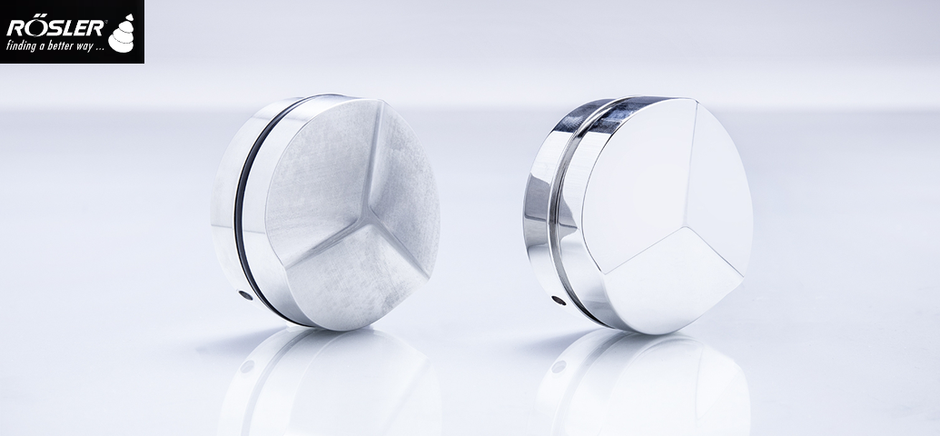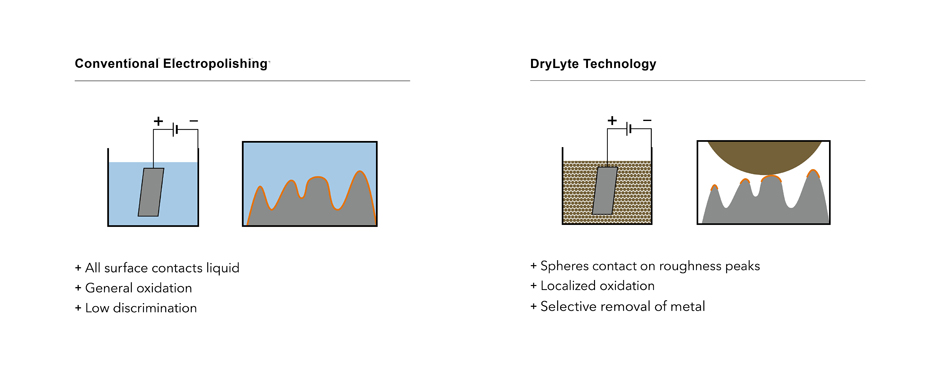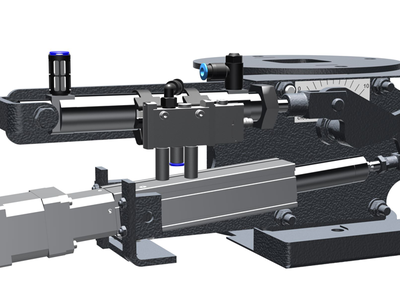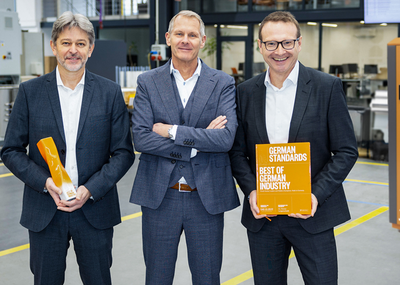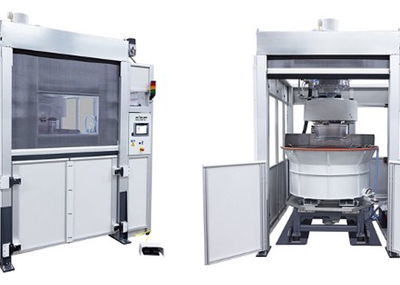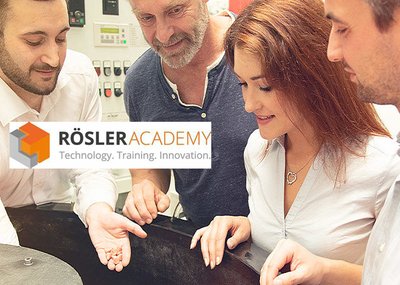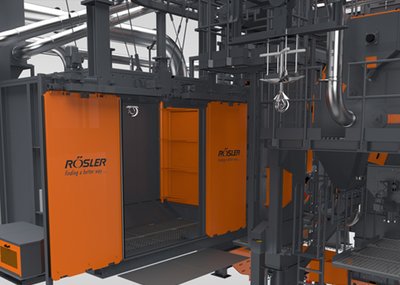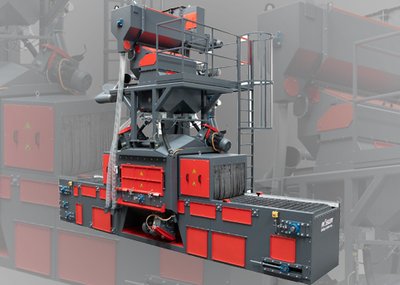The field of surface finishing is characterized by demands for higher quality with, at the same time, an increasing need for process consistency, traceability and resource efficiency. Frequently, this requires new finishing methods. With the DryLyte system Rösler Oberflächentechnik offers an innovative system for electropolishing metal components that must have a perfect finish. Contrary to classical electro-chemical polishing methods DryLyte is a dry process that utilizes solid particles containing electrolytes. Acid baths or other process liquids are completely eliminated. Benefits of this revolutionary technology are an excellent surface finish, a high geometrical consistency of the work pieces, a lower CO2 footprint and lower costs for waste disposal. The costly and complex treatment of used process liquids is completely eliminated, and the finished work pieces are discharged from the system perfectly clean.
Whether for cosmetic or functional reasons – the providers of surface finishing solutions are confronted with numerous challenges. On the one side demands for lower surface roughness values and geometrical consistency of the finished work pieces must be met, whereas on the other side the finishing processes must be cost-efficient and eco-friendly. Issues such as energy requirements, consumption of valuable resources, prevention of potentially hazardous substances and waste disposal are becoming more important. In addition, the customers are demanding absolutely consistent results and processes that can be perfectly reproduced. All these requirements can only partially be met with manual finishing or traditional electropolishing methods with liquid electrolytes. With its innovative DryLyte polishing technology GPA Innova, a partner of Rösler Oberflächentechnik, offers an excellent method for finishing geometrically complex components made from conductive metals.
From deburring to high gloss polishing – a sustainable and highly efficient technology
The fully automatic DryLyte system simplifies and helps standardize different surface finishing tasks such as deburring, surface smoothing, surface grinding, high gloss polishing and, even, post processing of 3D printed components. Depending on the initial surface conditions und the specified finishing results, dry electropolishing can be utilized as stand-alone process or in combination with known mass finishing, shot blasting and other pre-grinding methods. The DryLyte technology is based on the principle of electro-chemical material removal from the surface of components. However, the technology does not use liquid electrolytes but a multitude of polymer pellets in different sizes containing electrolyte media that are precisely adapted to the respective finishing task. In contrast to the traditional electropolishing systems no hazardous vapors are generated requiring energy-intensive exhaust systems and special protective gear for the operator. Since the material removed from the work piece surface is absorbed by the electrolyte medium, no dust or metal particles are getting into the environment, as happens with manual grinding and polishing operations. High-quality, consistent processing results are achieved throughout the usable life of the electrolyte medium. This must only be replaced once the dry electrolyte has been saturated with the metal removed from the work piece surface. The waste disposal of the saturated electrolytes is similar to the disposal of grinding media. The saturation rate is monitored by the machine so that the operator is always up-to-date and informed about the remaining usage time. This guarantees absolutely stable, and consistent finishing results and the optimal utilization of the electrolyte. It also helps minimize the costs for labor and waste disposal. Finally, because of the efficient resource utilization the CO2 footprint is reduced.

